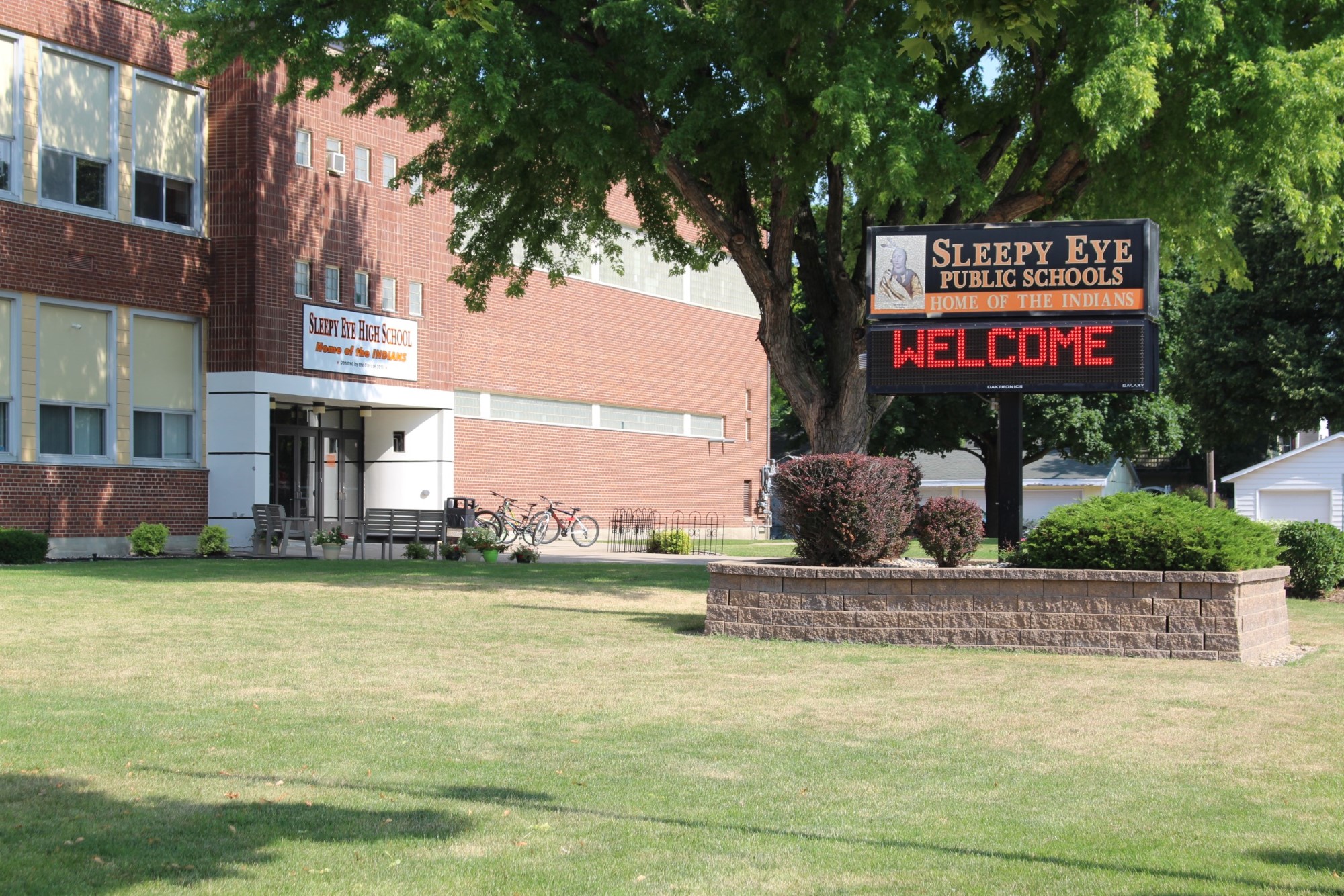Adopted: 8-14-08 MSBA/MASA Model Policy 624
Orig. 2003
Revised: 7-12-12 Rev. 2010
624 ONLINE LEARNING OPTIONS
I. PURPOSE
The purpose of this policy is to recognize and govern online learning options of students enrolled in the school district for purposes of compulsory attendance 1and address enrollment of students with an online learning provider for supplemental or full-time online learning.
II. GENERAL STATEMENT OF POLICY
A. The school district shall not prohibit an enrolled student from applying to enroll in online learning.
B. The school district shall grant academic credit for completing the requirements of an online learning course or program.
C. The school district shall allow an online learning student to have the same access to the computer hardware and education software available in the school district as all other students in the school district.
D. The school district shall continue to provide non-academic services to online learning students.
E. Online learning students may participate in the extracurricular activities of the school district on the same basis as other enrolled students.
[Note: The school district may itself offer online learning to its enrolled students. Such online learning does not generate online learning funds. To the extent online learning is offered by the school district only to its enrolled students, it is not subject to the Minnesota Department of Education (MDE) reporting or review requirements unless the school district is a full-time online provider. See Minn. Stat. § 124D.095, Subd. 4(d) and (e).
To the 1extent the school district provides to resident students curriculum that has both physical and electronic components, the school district must make the electronic component accessible to a resident student in a home school at the request of the home-schooled student or student’s parent or guardian, provided that the school district does not incur more than an incidental cost as a result of providing access electronically. See Minn. Stat. § 123B.42.]
1III. DEFINITIONS
A. “Enrolling 1district” means the school district or charter school in which a student is enrolled under Minn. Stat. § 120A.22, Subd. 4, for purposes of compulsory education.
B. “Full-time online provider” means an enrolling school authorized by the Minnesota Department of Education (MDE) to deliver comprehensive public education at any or all of the elementary, middle, or high school levels.
C. “Online 1course syllabus” is a written document that an online learning provider transmits to the enrolling school district using a format prescribed by the Commissioner of MDE (Commissioner) to identify the state academic standards embedded in an online course, the course content outline, required course assessments, expectations for actual teacher contact time, and other student-to-teacher communications, and the academic support available to the online learning student.
D. “Online learning” is an interactive course or program that delivers instruction from a teacher to a student by computer, is combined with other traditional delivery methods that include frequent student assessment and may include actual teacher contact time, and meets or exceeds state academic standards.
E. “Online learning student” is a student enrolled in an online learning course or program delivered by an authorized online learning provider.
F. “Online learning provider” is a school district, an intermediate school district, or an organization of two or more school districts operating under a joint powers agreement, or a charter school located in Minnesota that provides online learning to students.
G. “Student” 1is a Minnesota resident enrolled in a public school, a nonpublic school, church or religious organization, or home school in which a child is provided instruction in compliance with Minn. Stat. §§ 120A.22 and 120A.24.
H. “Supplemental online learning” means an online course taken in place of a course period during the regular school day at a local district school.
IV. PROCEDURES
A. Dissemination and Receipt of Information
1. The school district shall make available information about online learning to all interested people. The school district may utilize the list of approved online learning providers and online learning courses and programs developed, published, and maintained by MDE.
2. The school district will receive and maintain information provided to it by online learning providers.
3. The 1online learning provider must report or make available information on an individual student’s progress and accumulated credit to the student, the student’s parent, and the enrolling district in a manner specified by the Commissioner unless the enrolling district and the online learning provider agree to a different form of notice and notify the Commissioner.
4. The 1enrolling district must designate a contact person to help facilitate and monitor the student’s academic progress and accumulated credits toward graduation.
B. Student Enrollment
1. A student may apply for full-time enrollment in an approved online learning program. The student must have the written consent of a parent or guardian to do so if the student is under eighteen (18) years of age.
2. The student and the student’s parents must submit an application to the online learning provider and identify the student’s reason for enrolling. An online learning provider that accepts a student under this section must notify the student and the enrolling district in writing within ten days if the enrolling district is not the online learning provider. The student and the student’s parent must notify the online learning provider of the student’s intent to enroll in online learning within ten days of being accepted, at which time the student and the student’s parent must sign a statement indicating that they have reviewed the online course or program and understand the expectations of enrolling in online learning. The online learning provider must use a form provided by MDE to notify the enrolling district of the student’s application to enroll in online learning.
3. The supplemental online learning notice to the enrolling district when a student applies to the online learning provider will include the courses or program, credits to be awarded, and the start date of the online 1course or program. An online learning provider must make available the supplemental online course syllabus to the enrolling district. Within 15 days after the online learning provider makes information in this paragraph available to the enrolling district, the enrolling district must notify the online provider whether the student, the student’s parent, and the enrolling district agree or disagree that the course meets the enrolling district’s graduation requirements. A student may enroll in a supplemental online learning course up to the midpoint of the school district’s term. The school district may waive this requirement for special circumstances with the agreement of the online learning provider.
4. An online learning 1course or program that meets or exceeds a graduation standard or the grade progression requirement of the enrolling district as described in the provider’s online course syllabus meets the corresponding graduation requirements applicable to the student in the enrolling district. If the enrolling district does not agree that the course or program meets its graduation requirements, then the enrolling district must make available an explanation of its decision to the student, the student’s parent, and the online provider; and the online provider may make available a response to the enrolling district, showing how the course or program meets the graduation requirements of the enrolling district.
5. An online learning student may enroll in supplemental online learning courses equal to a maximum of 50 percent of the student’s full schedule of courses per term during a single school year, and the student may exceed the supplemental online learning registration limit if the enrolling district permits for supplemental online learning enrollment above the limit or if the enrolling district and the online learning provider agree to the instructional services. To enroll in more than 50 percent of the student’s full schedule or courses per term in online learning, the student must qualify to exceed the supplemental online learning registration limit or apply to enroll in an approved full-time online learning program consistent with Paragraph IV.B.2. above. Full-time online learning students may enroll in classes at a local school under a contract for instructional services between the online learning provider and the school district.
6. An online learning student may complete course work at a grade level that is different from the student’s current grade level.
7. An online learning student may enroll in additional courses with the online learning provider under a separate agreement that includes terms for paying any tuition or course fees.
C. Classroom Membership and Teacher Contact Time
1. The enrolling district may reduce an online learning student’s regular classroom instructional membership in proportion to the student’s membership in online learning courses.
2. The school district may reduce the course schedule of an online learning student in proportion to the number of online learning courses the student takes from an online learning provider other than the school district.
3. A teacher with a Minnesota license must assemble and deliver instruction to enrolled students receiving online learning from an enrolling district. The delivery of instruction occurs when the student interacts with the computer or the teacher and receives ongoing assistance and assessment of learning. The instruction may include curriculum developed by persons other than a teacher holding a Minnesota license.
4. The 1online provider must give the Commissioner written assurance that all courses meet state academic standards and the online learning curriculum, instruction, and assessment expectations for actual teacher contact time or other student-teacher communications and academic support meet nationally recognized standards and are described as such in an online syllabus that meets the Commissioner’s requirements.
D. Academic Credit; Graduation Standards or Requirements
1. The school district shall apply the same graduation requirements to all students, including online learning students.
2. The school district shall use the same criteria for accepting online learning credits or courses as it does for accepting credits or courses for nonresident transfer students under Minnesota law.
3. The school district may challenge the validity of a course offered by an online learning provider. Such a challenge will be filed with MDE.
4. The school district shall count secondary credits granted to an online learning student toward its graduation and credit requirements.
5. If a student completes an online learning course or program that meets or exceeds a graduation standard or grade progression requirement at the school district, that standard or requirement will be met.
Legal References: Minn. Stat. § 120A.22 (Compulsory Instruction)
Minn. Stat. § 120A.24 (Reporting)
Minn. Stat. § 123B.42, Subd. 1 (Curriculum; Electronic Components)
Minn. Stat. § 124D.03 (Enrollment Options Program)
Minn. Stat. § 124D.09 (Post-Secondary Enrollment Options Act)
Minn. Stat. § 124D.095 (Online Learning Option Act)
Cross References: MSBA/MASA Model Policy 509 (Enrollment of Nonresident Students)
MSBA/MASA Model Policy 605 (Alternative Programs)
MSBA/MASA Model Policy 608 (Instructional Services – Special Education)
MSBA/MASA Model Policy 613 (Graduation Requirements)
MSBA/MASA Model Policy 620 (Credit for Learning)

